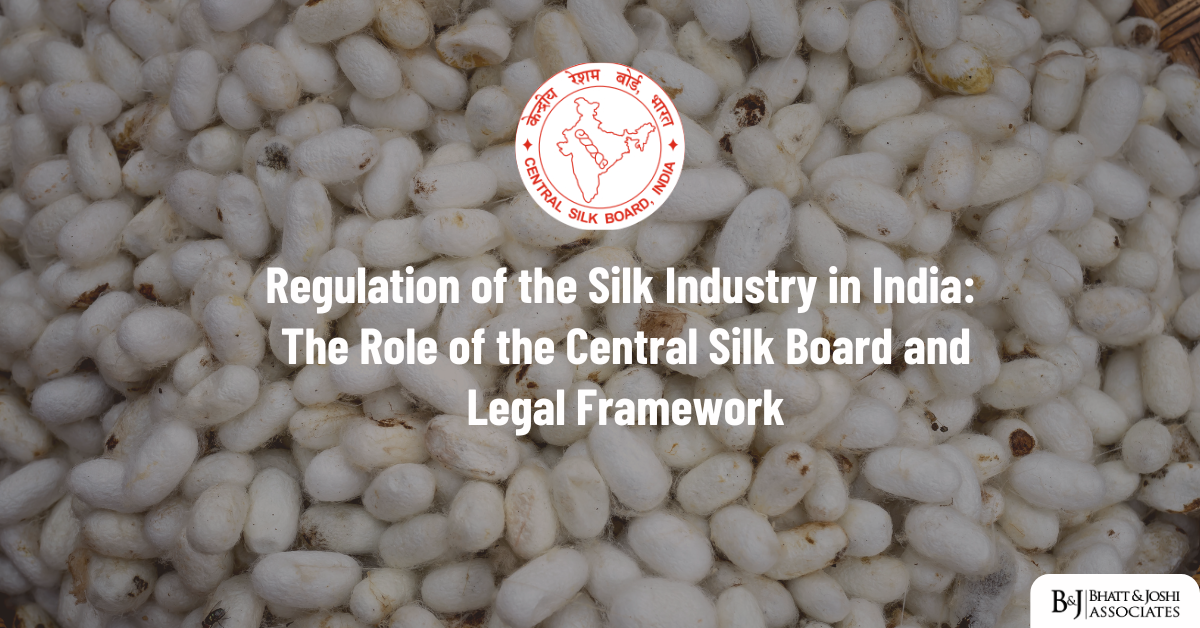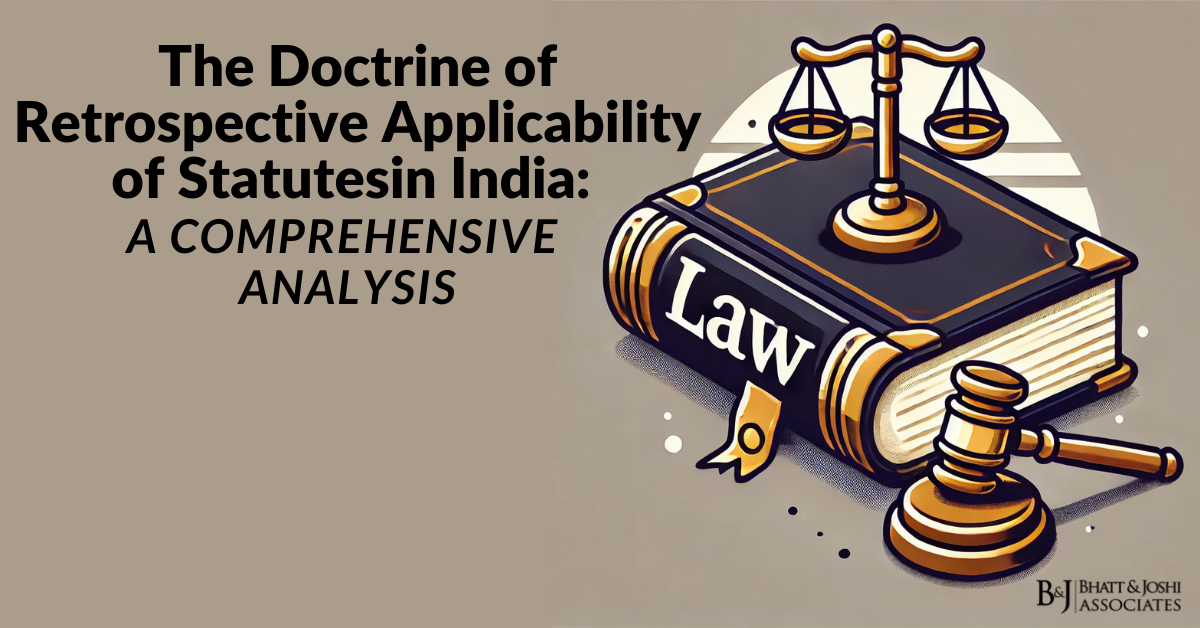Introduction
The silk industry in India has a historical and cultural significance, making it one of the most vital sectors in the country’s economy. India is the second-largest producer of silk in the world and has a diverse sericulture heritage. The Central Silk Board (CSB) is the apex body responsible for the promotion, development, and regulation of the silk industry in India. Established under the Central Silk Board Act, 1948, the CSB plays a pivotal role in ensuring that sericulture and silk production align with the needs of the economy while promoting sustainable practices. This article explores the role of the CSB, how the industry is regulated, the key legal provisions, and notable case laws affecting the silk industry in India.
The Role of the Central Silk Board
The Central Silk Board (CSB) was established under the Central Silk Board Act, 1948 as an autonomous body under the Ministry of Textiles, Government of India. The primary objective of the CSB is to promote the development of sericulture, increase the production of silk, and ensure the growth of the silk industry in India. It does so through several key activities:
- Research and development in sericulture and silk production.
- Setting quality standards for silk and silk products.
- Providing financial and technical assistance to sericulture farmers and silk producers.
- Regulating the import and export of silk and raw materials.
- Ensuring the sustainability of the industry by promoting environmentally friendly sericulture practices.
The CSB oversees all stages of silk production, from the cultivation of mulberry plants (the primary food source for silkworms) to the final production of silk fabric. It works closely with various state sericulture boards and research institutions to promote the industry’s growth.
Legal Framework Governing the Silk Industry in India
The silk industry in India is primarily regulated by the Central Silk Board Act, 1948. This legislation provides the legal basis for the establishment and functioning of the Central Silk Board and outlines the board’s powers and responsibilities. The Act includes provisions for the promotion of sericulture, the improvement of silk production, and the regulation of the quality and standards of silk products.
Central Silk Board Act, 1948
The Central Silk Board Act, 1948 is the cornerstone of the legal framework governing the silk industry in India. Some key sections of the Act include:
- Section 4: Establishes the Central Silk Board and defines its functions, including research, technical support, and the promotion of sericulture.
- Section 7: Grants the board the power to regulate the quality and standards of silk products.
- Section 9: Provides the board with the authority to provide financial assistance and subsidies to sericulture farmers and silk producers.
- Section 12: Empowers the board to undertake research and development in sericulture and silk production.
The Act also mandates the CSB to coordinate with state governments and local authorities to implement sericulture programs and provide financial and technical assistance to farmers and silk producers.
The Silk Industry (Regulation) Act, 1957
In addition to the Central Silk Board Act, the Silk Industry (Regulation) Act, 1957 plays a significant role in regulating the silk industry in India. This Act empowers the government to regulate the import, export, and movement of silk and silk products within the country. It also sets guidelines for the licensing of silk production units and ensures that only registered units can operate legally.
Other Relevant Legislations
The silk industry is also subject to various other laws, including environmental regulations, labor laws, and trade policies. Some of these laws include:
- The Environmental Protection Act, 1986: This Act applies to sericulture as it mandates the sustainable use of natural resources, including land and water, which are crucial for mulberry cultivation.
- The Minimum Wages Act, 1948: This Act governs the wages of workers in the sericulture industry, ensuring fair compensation for laborers.
- The Customs Act, 1962: Regulates the import and export of silk and raw materials, ensuring compliance with trade policies and quality standards.
Key Regulatory Bodies and Their Functions
The Central Silk Board is the primary regulatory body for the silk industry in India, but it works in conjunction with various state sericulture boards and other regulatory authorities. Some of the key bodies involved in regulating the silk industry include:
- State Sericulture Boards: These boards are responsible for implementing sericulture programs at the state level, providing support to farmers, and promoting the growth of the silk industry within their respective states.
- Silk Mark Organisation of India (SMOI): An initiative of the Central Silk Board, SMOI is responsible for certifying the quality of silk products through the issuance of the “Silk Mark” label. This certification helps consumers identify genuine silk products and protects the interests of silk producers.
- Central Silk Technological Research Institute (CSTRI): CSTRI conducts research and development in silk production technologies and provides technical support to the industry. It works closely with sericulture farmers to improve production techniques and ensure the quality of silk products.
- National Silkworm Seed Organisation (NSSO): The NSSO ensures the availability of high-quality silkworm seeds to sericulture farmers. It plays a crucial role in maintaining the genetic quality of silkworm breeds and ensuring their sustainability.
Notable Case Laws Impacting the Silk Industry
Several court cases have shaped the legal landscape of the silk industry in India. These cases have addressed various issues, including the regulation of silk production, the rights of sericulture farmers, and environmental concerns. Some of the most significant cases are discussed below:
1. State of Karnataka v. Central Silk Board (2004)
This case involved a dispute between the Government of Karnataka and the Central Silk Board regarding the regulation of silk production in the state. The state government sought to impose additional taxes on silk producers, arguing that it had the authority to regulate sericulture within its jurisdiction. The Central Silk Board challenged this move, citing the Central Silk Board Act, 1948, which grants the CSB exclusive powers to regulate the silk industry.
The Supreme Court ruled in favor of the Central Silk Board, stating that the Central Silk Board Act, 1948 gives the CSB overarching authority to regulate sericulture and silk production across the country. The Court held that state governments must work in collaboration with the CSB to promote the industry, but they cannot impose additional taxes or regulations that contradict the CSB’s mandate.
2. P. N. Swamy v. Silk Mark Organisation of India (2015)
In this case, a silk producer challenged the certification process of the Silk Mark Organisation of India (SMOI), arguing that the criteria for obtaining the “Silk Mark” label were too stringent and discriminatory against small-scale producers. The producer contended that the certification process favored large-scale manufacturers and that the SMOI was not providing adequate support to smaller producers.
The Delhi High Court ruled in favor of the Silk Mark Organisation of India, stating that the certification process was designed to maintain high-quality standards in the silk industry. The Court emphasized that the “Silk Mark” label is essential for protecting consumers from counterfeit products and ensuring that genuine silk producers can compete in the market.
3. N. S. Krishnan v. Central Silk Board (2019)
This case involved a dispute between a sericulture farmer and the Central Silk Board over the quality of silkworm seeds provided by the National Silkworm Seed Organisation (NSSO). The farmer argued that the seeds were defective and resulted in significant losses in silk production. The Central Silk Board contended that the seeds were of high quality and that the farmer’s losses were due to improper cultivation practices.
The Karnataka High Court ruled in favor of the farmer, stating that the Central Silk Board and the NSSO have a responsibility to ensure the quality of silkworm seeds provided to farmers. The Court held that the CSB must provide compensation to the farmer for his losses and take steps to improve the quality control measures for silkworm seeds.
Challenges Faced by the Silk Industry in india
Despite its rich heritage and economic significance, the silk industry in India faces several challenges, including:
- Counterfeit Silk Products: The market is flooded with fake silk products that undermine the value of genuine silk. The CSB has taken steps to address this issue by promoting the Silk Mark certification, but more efforts are needed to protect the interests of silk producers.
- Environmental Concerns: Sericulture is resource-intensive, requiring large amounts of water and land for mulberry cultivation. The industry must adopt more sustainable practices to mitigate its environmental impact.
- Labor Issues: Many workers in the silk industry are employed under poor working conditions and receive low wages. The industry must address labor rights issues to ensure fair compensation and working conditions for sericulture farmers and workers.
Conclusion
The silk industry in India is a vital sector that contributes significantly to the economy and cultural heritage of the country. The Central Silk Board plays a crucial role in regulating and promoting the industry, ensuring that sericulture and silk production are carried out sustainably and in compliance with the law. Through various legislations such as the Central Silk Board Act, 1948, and the Silk Industry (Regulation) Act, 1957, the CSB has been able to regulate the industry effectively. However, challenges such as counterfeit products, environmental concerns, and labor issues continue to affect the industry’s growth. Addressing these challenges through legal reforms and sustainable practices will be essential for the future development of the silk industry.














